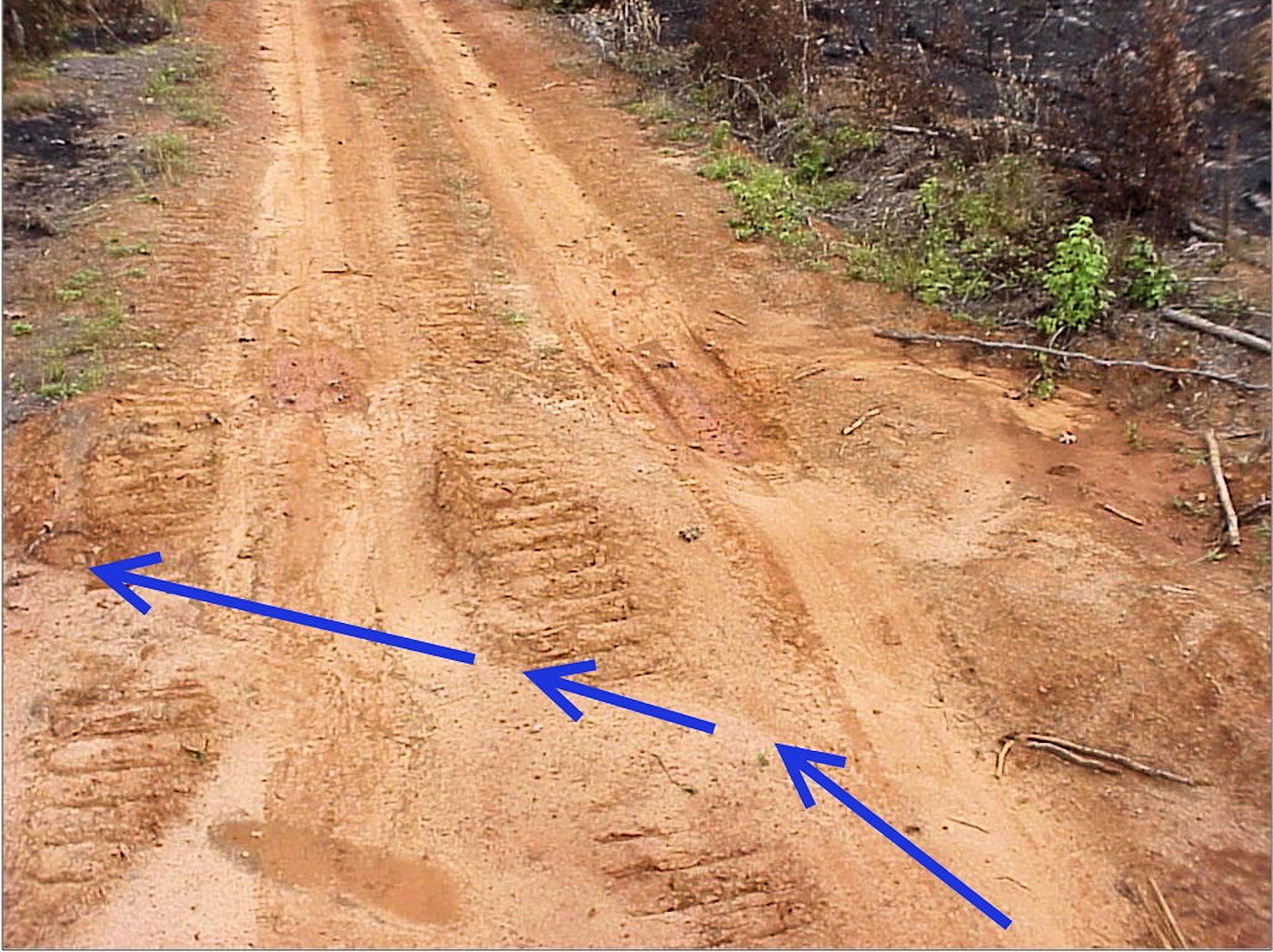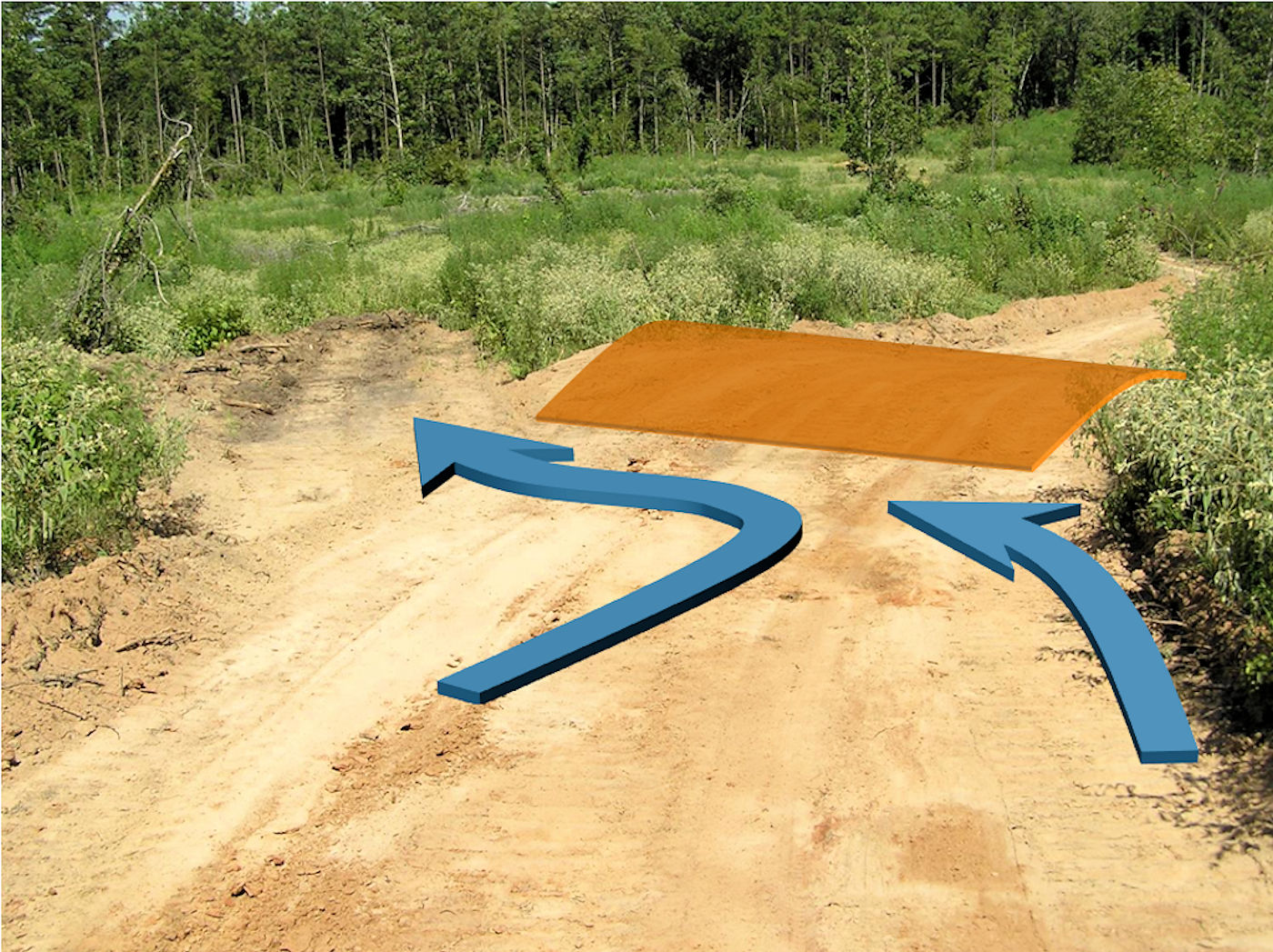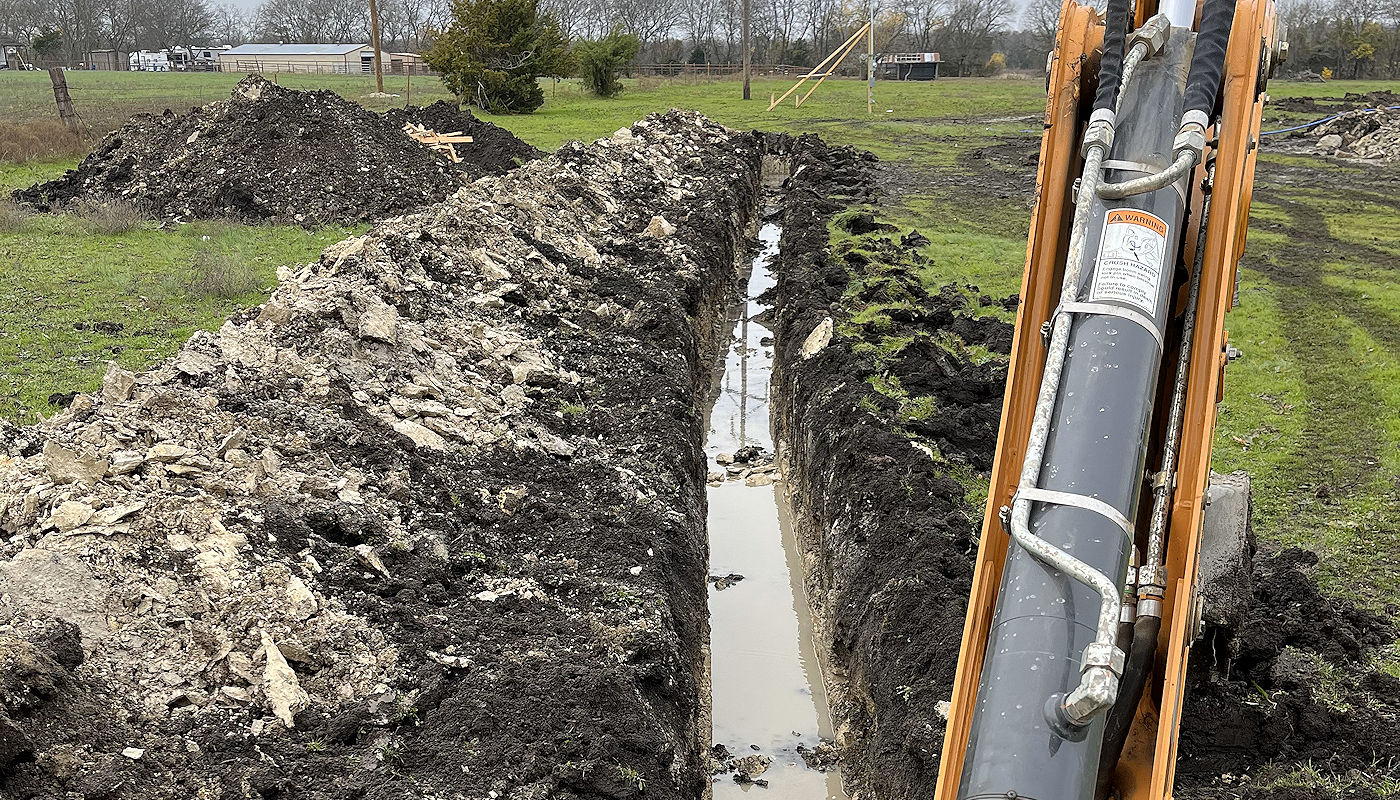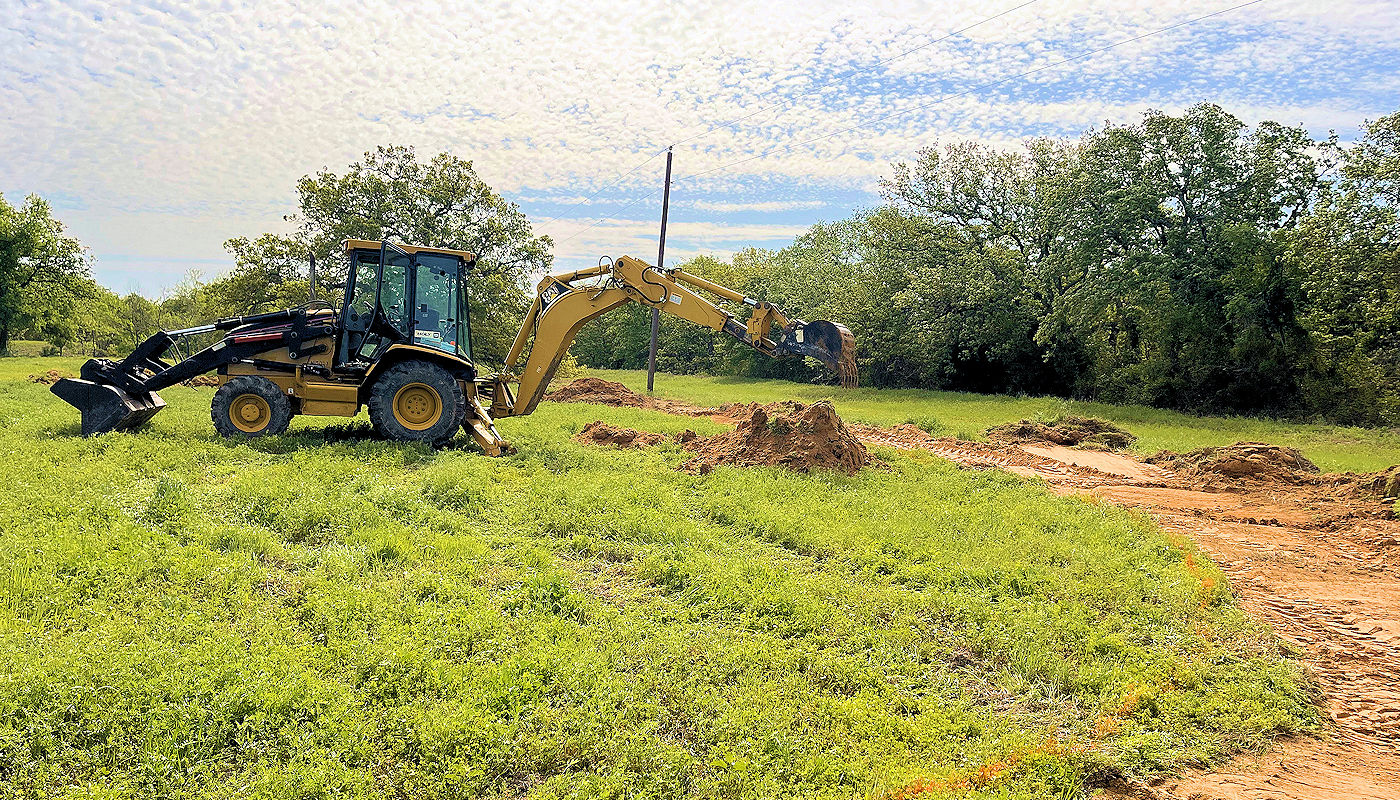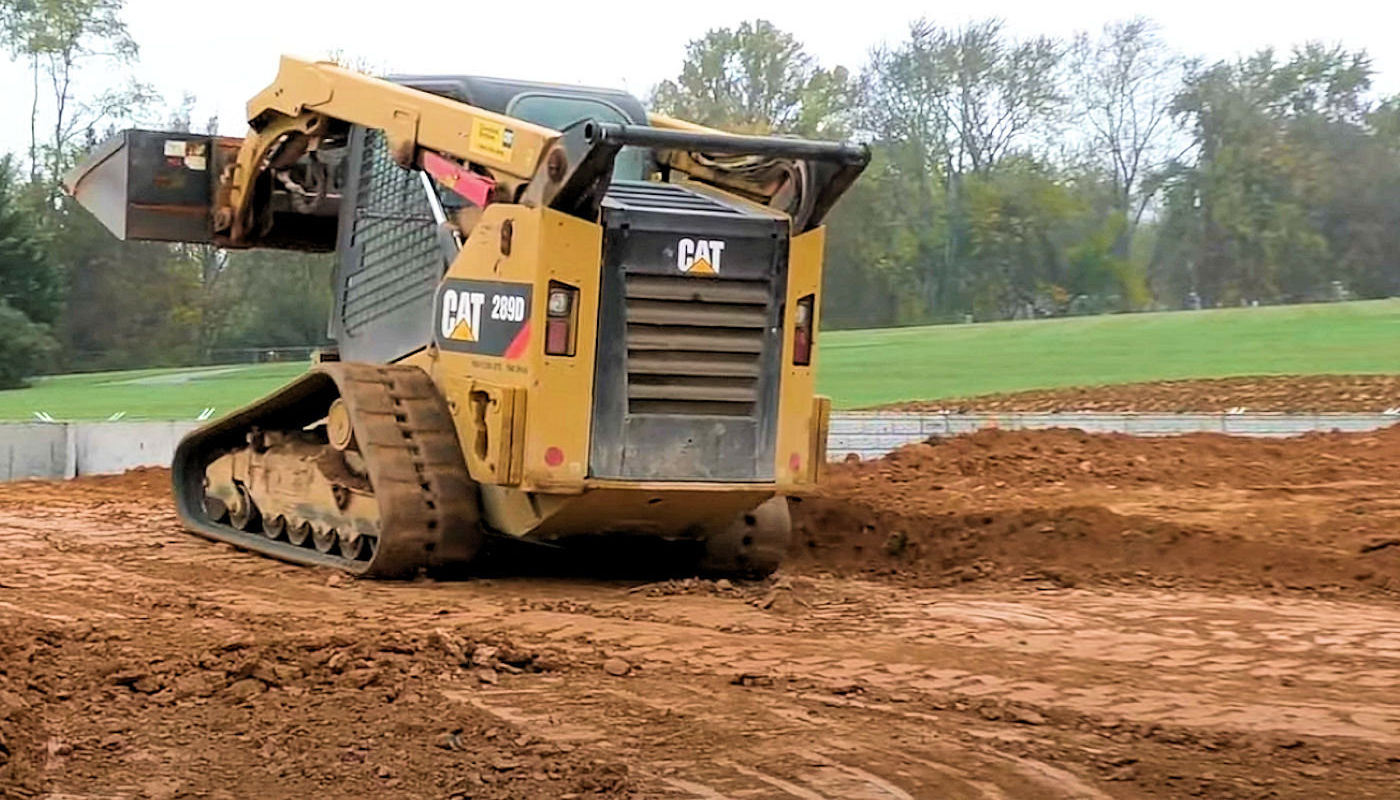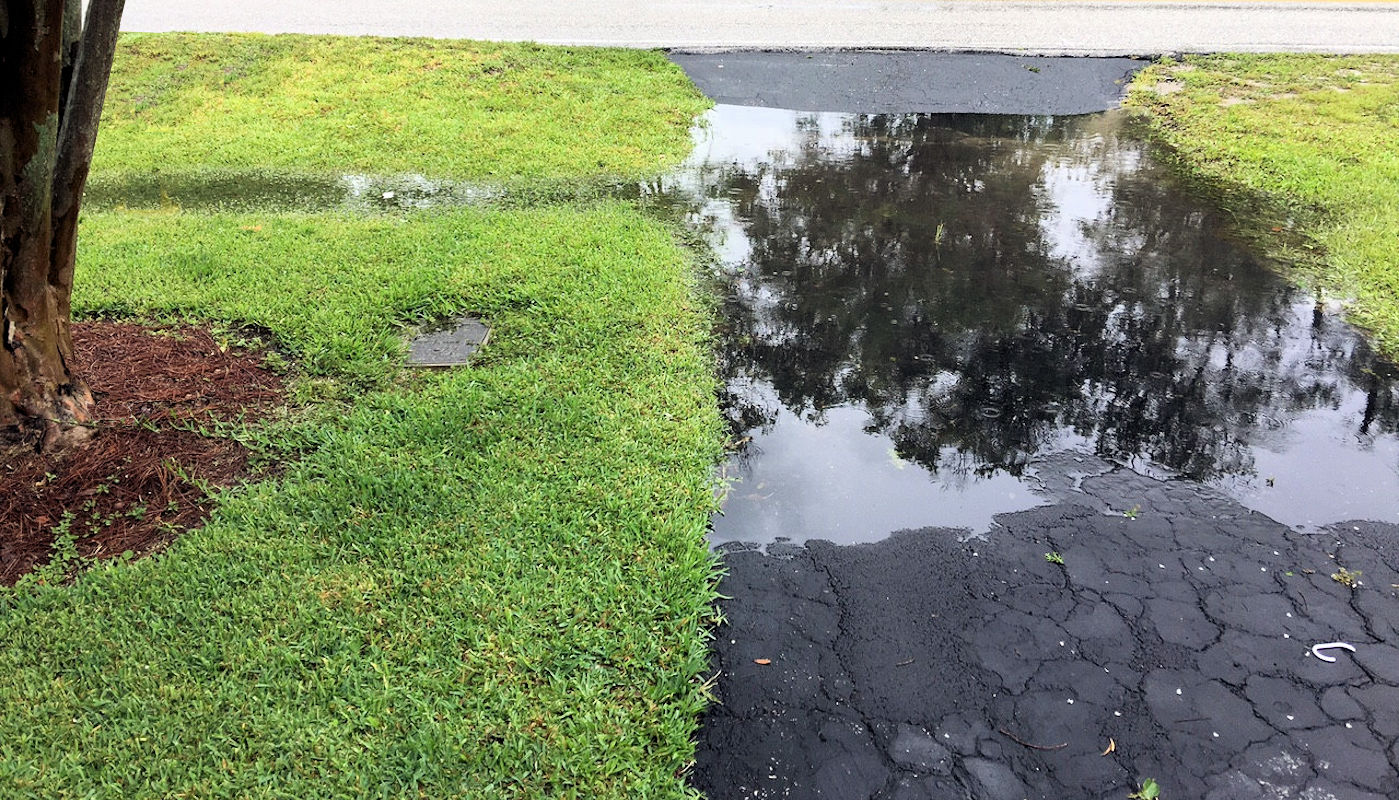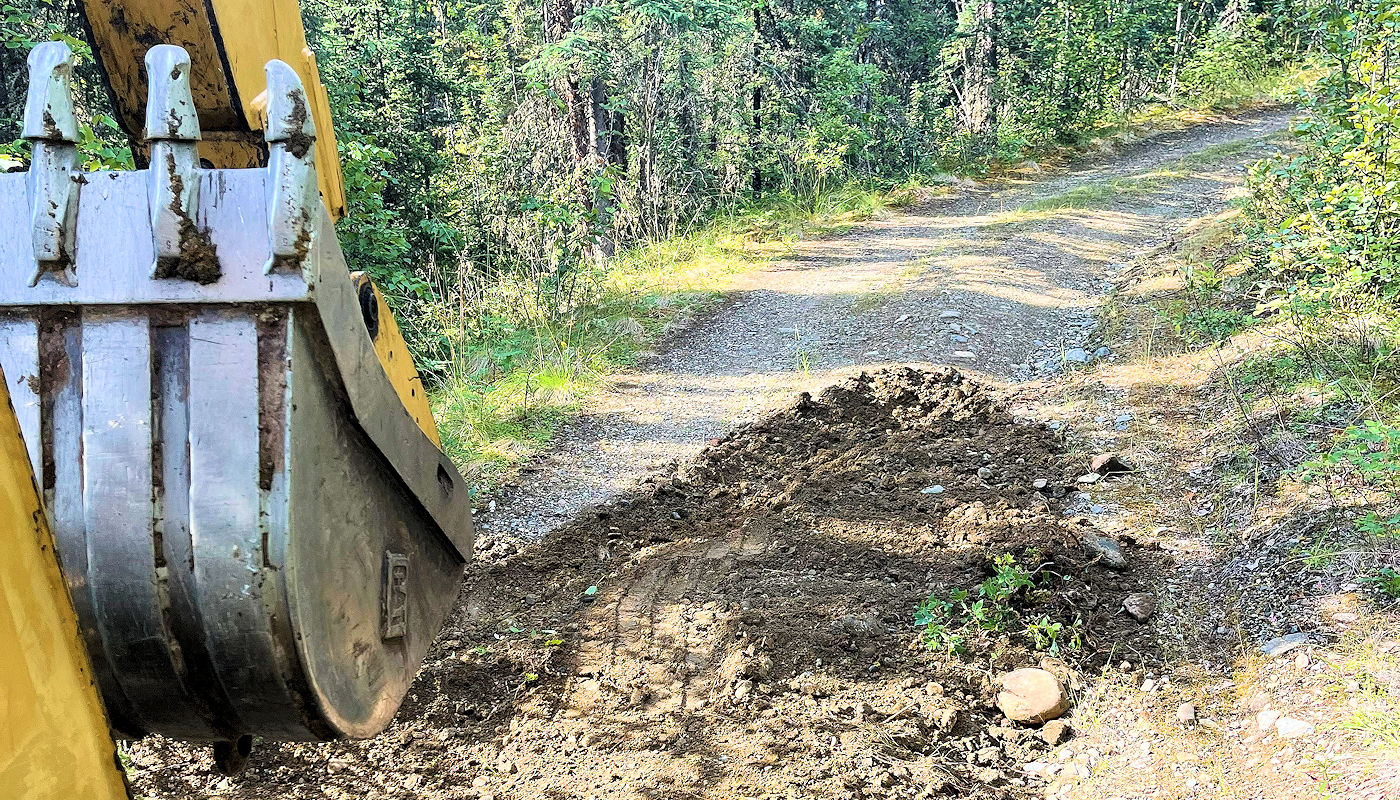

Building Gravel Roads: Cutting Water Bars Before Gravel
Durable & Reliable Gravel Road & Driveway Construction
Building Gravel Roads: Cutting Water Bars Before Gravel
Durable & Reliable Gravel Road & Driveway Construction
Building a private gravel road or long gravel drive involves much more than just scraping out a pathway. Proper drainage is crucial to ensure the longevity and durability of your road. At Texoma Excavation and Construction, we understand the importance of managing water runoff to prevent erosion and maintain the integrity of your gravel road. One essential component of this process is the use of water bars. These structures, along with wing ditches and settling ponds, play a vital role in directing water off the road in a controlled and pre-planned flow.
Our extensive experience in building gravel roads ensures that we incorporate these critical drainage features into every project, providing you with a durable and reliable road that stands the test of time. At Texoma Excavation and Construction, we take pride in our comprehensive approach to gravel and road base road building. From initial surveying to post-project maintenance, we handle every aspect of your project with meticulous attention to detail. Contact us today to discuss your gravel road or drive project and learn how our expertise can help you achieve the best results.
When building a gravel road, what does “Cutting water bars before gravel” refer to?
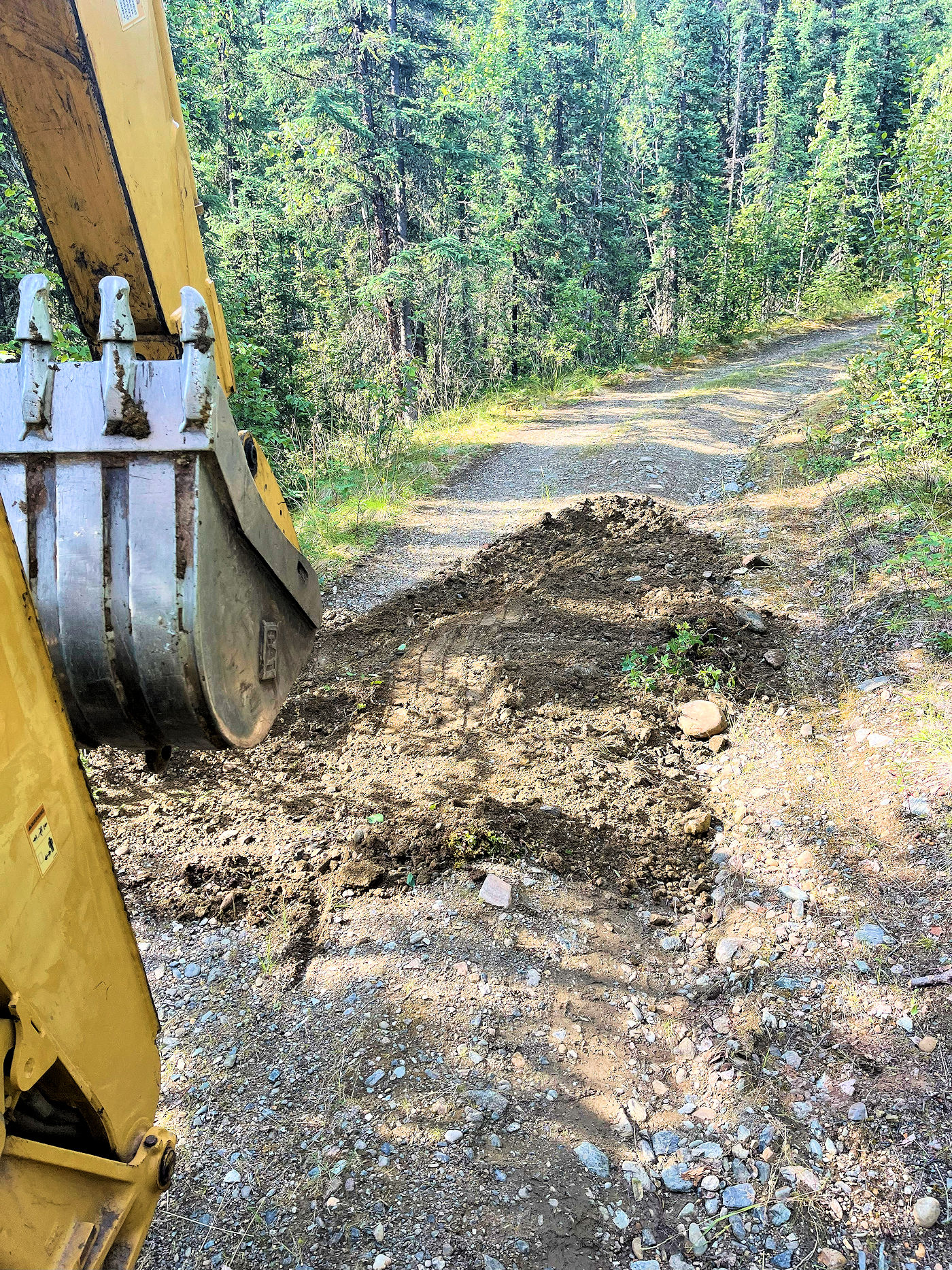

“Cutting water bars before gravel” refers to constructing diagonal channels or ridges across the road (before laying down the gravel) to divert water off the surface, preventing erosion and maintaining the road’s integrity[1][2].
This ensures that water is effectively diverted from the roadbed, reducing the risk of washouts and maintaining a stable surface[3]. This step is crucial for the longevity and durability of gravel roads, especially in areas prone to heavy rainfall or runoff.
Water bars are commonly placed across gravel roads, trails, and other sloping unpaved accessways to prevent the risk of erosion and to maintain the road’s (or long drives) stability. Wing ditches further assist by channeling water away from the road surface, while settling ponds may additionally help manage and filter runoff before it re-enters the natural environment. Our extensive experience in building gravel roads ensures that we incorporate these critical drainage features into every project, providing you with a durable and reliable road or drive that stands the test of time. Water bars are particularly useful in areas with steep grades, high rainfall, or where the soil is prone to erosion.
They are often seen on Forest Service roads, gravel roads to farms or ranches, logging roads and other access roads in mountainous or heavily wooded and remote areas.
Here’s why they are important:
The Basics of Waterbars and Wing Ditches
Photo & Article Credit: Todd Thomas, Texas A&M Forest Service: Water Resources
Construct Waterbars at a 30–45-Degree Angle
Our primary reason to construct waterbars on unpaved roads is to divert surface water off the road at intervals, reducing the volume and speed of water flow, helping to prevent erosion of the road surface and surrounding areas. They also play an important environmental role as they redirect the detached soil particles (sediment) and carry them the slowed and redirected water flow. If not slowed down and dispersed, this sediment filled water flow can end up in the stream.
Waterbars should be constructed at a 30–45-degree angle, turning overland flow out and away from the road.
Click image to enlarge.
Wing Ditches
Accompanying a waterbar should be some sort of a turnout, more commonly referred to as a “wing ditch.” As the overland flow is intercepted by the waterbar, it is diverted into the wing ditch and dispersed before it has the opportunity to gain speed and cause further erosion. It is also important to note that wing ditches should be constructed to be more flat than v-shaped. This encourages diverted flow to dissipate rather than be concentrated.
Click image to enlarge.
Tie Waterbars to Edges of Road
When constructing waterbars it is important to be sure that both ends are tied into the edge of the road. This prevents “blow outs” or water from going around the waterbar.
Click image to enlarge.
Avoid Damming Water in the Road
Waterbars should never be constructed perpendicular to the road, this forms a dam, causing water to stand in the road. Even though any overland flow has been put to a stop, the integrity of the road has been compromised, due to the 90-degree waterbar with no turnout accompanying it.
Click image to enlarge.
Never Discharge into Streams
Waterbars and wing ditches should never discharge into streams. This increases stream bank erosion as well as increases the amount of sediment that enters the stream as a result of operations.
Click image to enlarge.
Pros, Cons,& Cost Options of Water Bar Materials
When constructing water bars for a private gravel road, especially in remote areas like forests, several materials can be used, each with its own advantages and disadvantages. By including both material and labor costs (especially since the cost of the Graded Water Bar is almost all labor), you can get a more comprehensive understanding of the total investment required for building a private gravel road with effective water management features.
In this video, MSU FBIC personnel discuss and demonstrate regrading forest logging roads, and the practice of marking out and installing water bars to control erosion.
Video Credit: MSU Forestry Innovation Center
Graded Road Water Bars (using a dozer or backhoe blade):
PVC Water Bars:
Rubber Water Bars:
Metal Water Bars:
Considerations for Different Road Grades
3% Rise: Roads with a slight incline will require more frequent water bars to manage runoff effectively, increasing both material and labor costs.
Mostly Flat Road: Fewer water bars are needed, reducing overall costs. However, proper drainage is still essential to prevent water pooling and erosion.
Additional Costs for Wing Ditches
Regardless of the type of water bar used, wing ditches are necessary to direct water away from the road effectively. The cost for cutting wing ditches should be factored into the overall project budget. This cost can vary based on the length and complexity of the ditches but typically involves additional labor and equipment time[9].
Resources
Past Excavation Projects
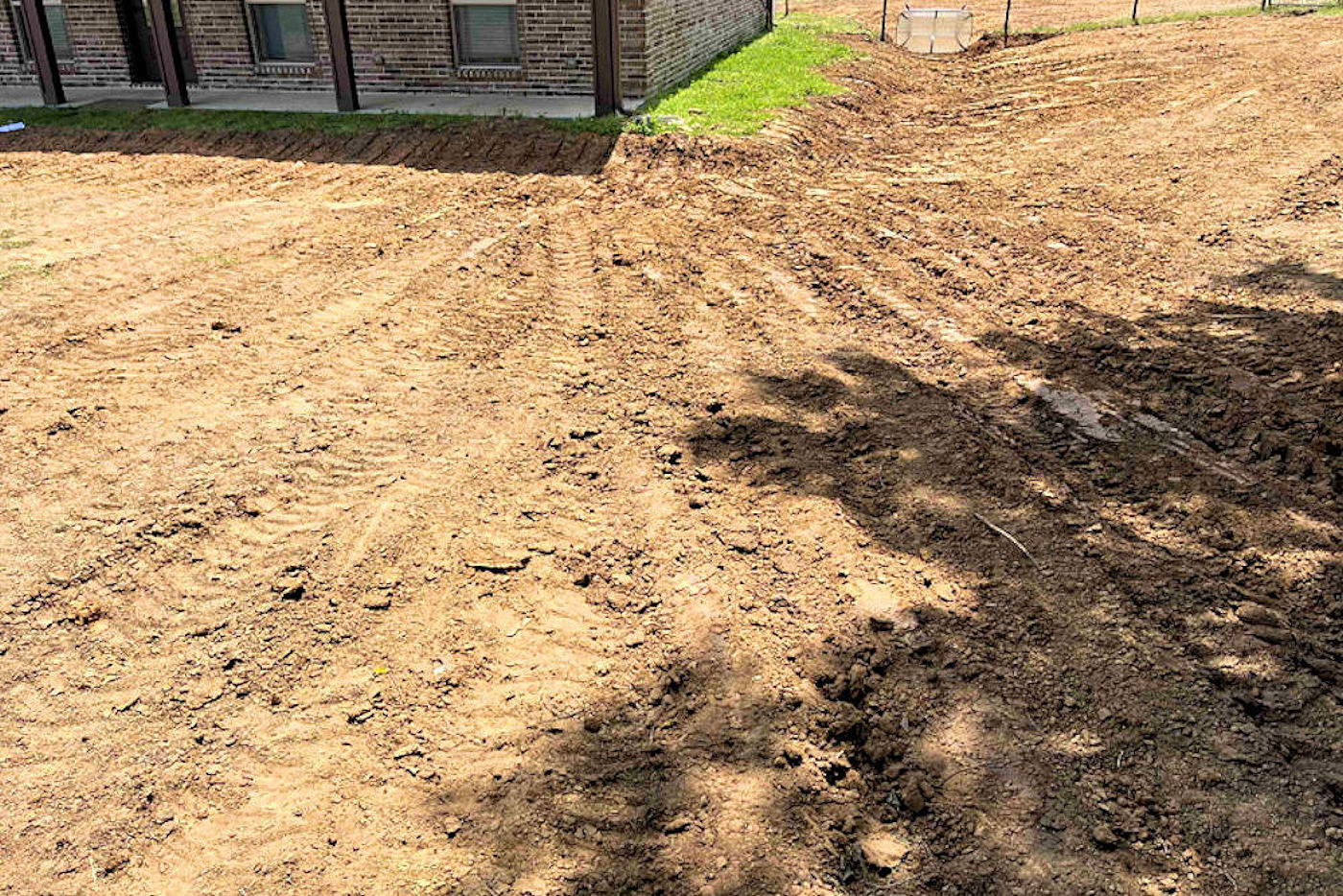
The above image shows Texoma Excavation & Construction digging a new power supply ditch and tying into the existing live power supply near Melissa, Texas. The paver stones were salvaged to be replaced. All the PVC, electrical conduit, phone lines, and small electrical lines that were destroyed were anticipated.

Pond building is a complex process that requires careful planning and execution. After all the planning, the first construction step is excavation of the area where the pond will be located. The pond excavation work shown above was near Montague, Texas. When this pond is full, it will be 7′ 2″ deep at its deepest point.
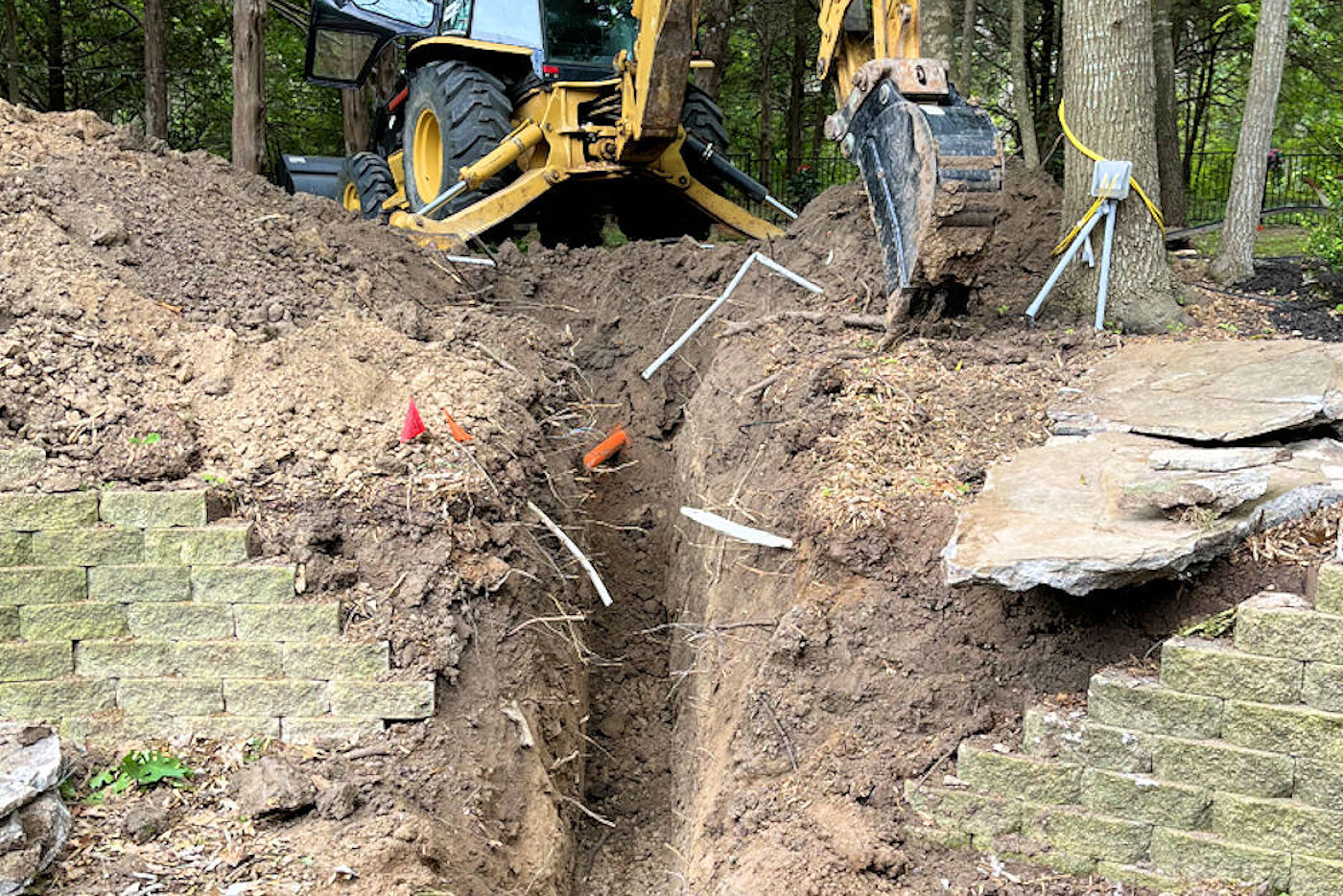
Residential drainage excavation work done near Denison, Texas. This client had some significant drainage problems during periods of high-volume runoff and tried to excavate a ditch to channel water away from his house. We were hired to polish the existing ditch and spread some grass seed.


